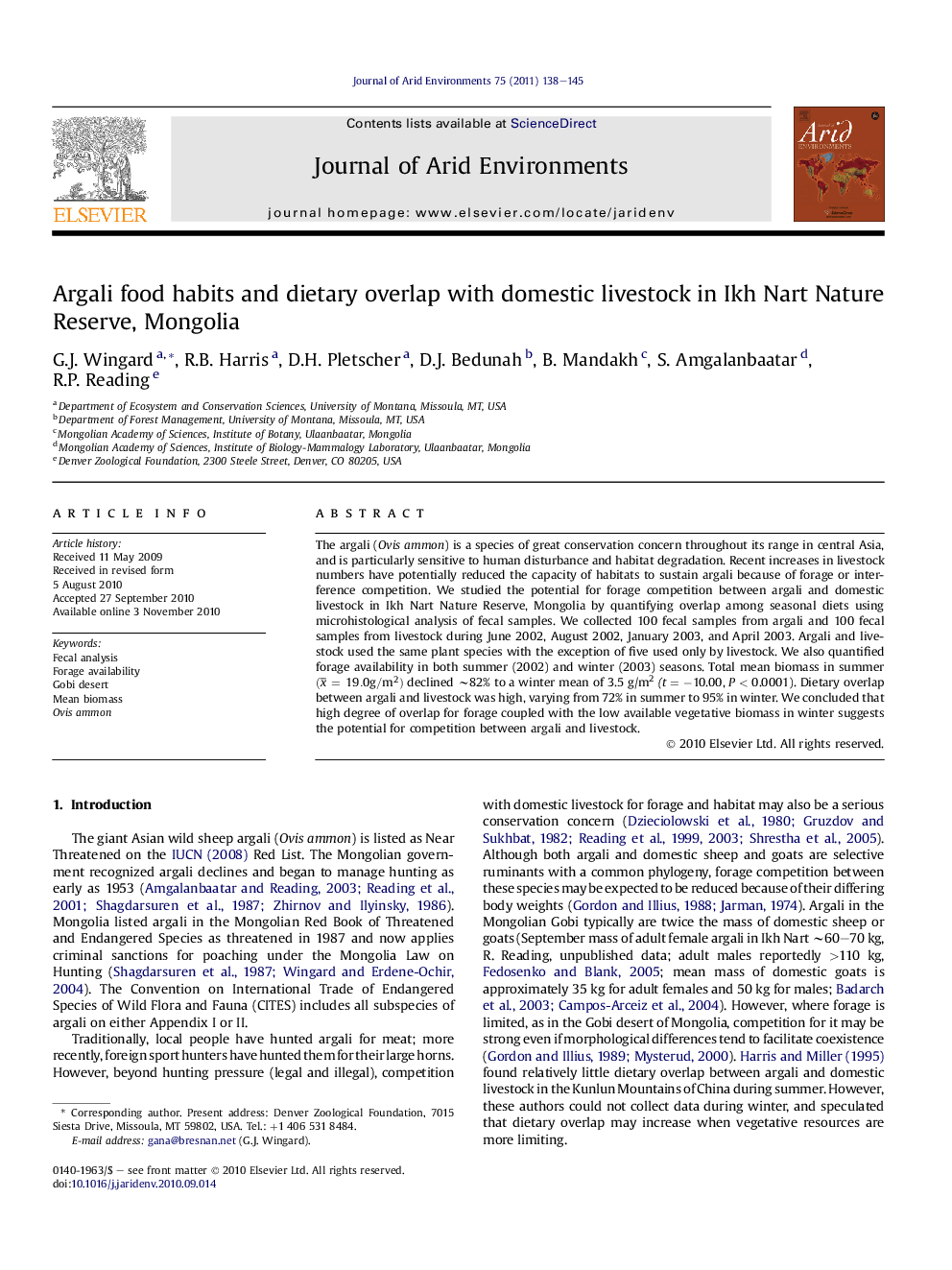| Article ID | Journal | Published Year | Pages | File Type |
|---|---|---|---|---|
| 4393601 | Journal of Arid Environments | 2011 | 8 Pages |
The argali (Ovis ammon ) is a species of great conservation concern throughout its range in central Asia, and is particularly sensitive to human disturbance and habitat degradation. Recent increases in livestock numbers have potentially reduced the capacity of habitats to sustain argali because of forage or interference competition. We studied the potential for forage competition between argali and domestic livestock in Ikh Nart Nature Reserve, Mongolia by quantifying overlap among seasonal diets using microhistological analysis of fecal samples. We collected 100 fecal samples from argali and 100 fecal samples from livestock during June 2002, August 2002, January 2003, and April 2003. Argali and livestock used the same plant species with the exception of five used only by livestock. We also quantified forage availability in both summer (2002) and winter (2003) seasons. Total mean biomass in summer (x¯=19.0g/m2) declined ∼82% to a winter mean of 3.5 g/m2(t = −10.00, P < 0.0001). Dietary overlap between argali and livestock was high, varying from 72% in summer to 95% in winter. We concluded that high degree of overlap for forage coupled with the low available vegetative biomass in winter suggests the potential for competition between argali and livestock.
Research highlights►Dietary overlap between argali and livestock was high. ► Biomass decreased significantly between seasons. ► High degree of overlap, low biomass, and extreme cold winters suggests the potential for competition between argali and livestock. ► A reduction of livestock would likely improve the situation for argali.
